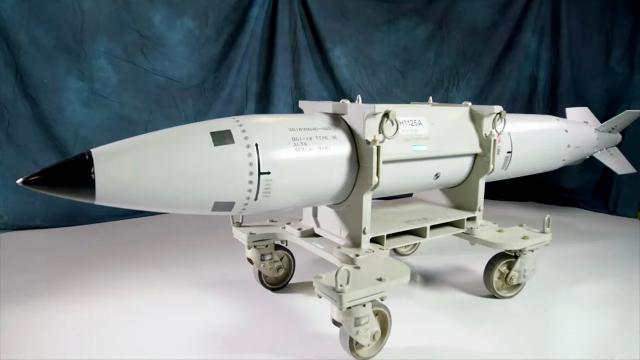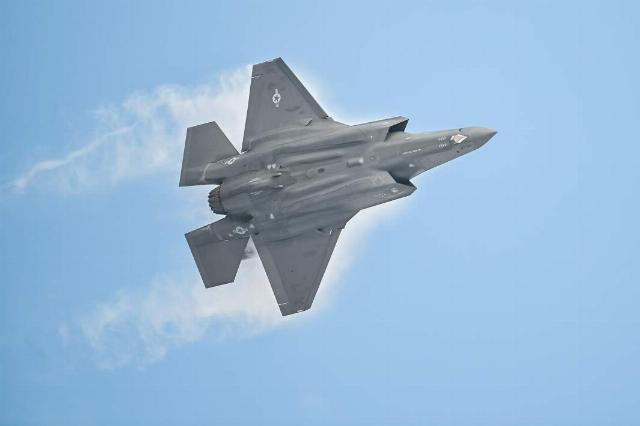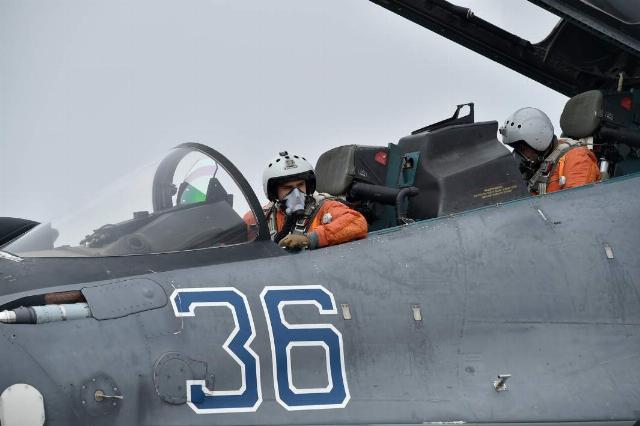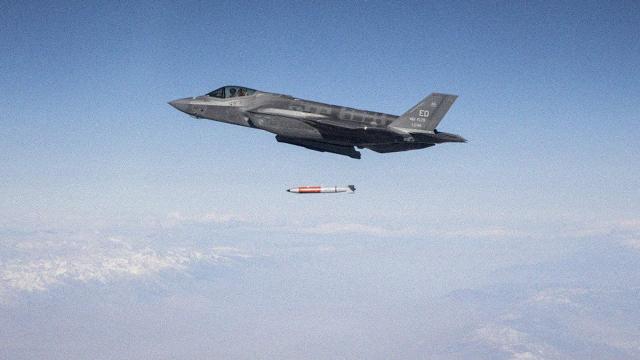The upgraded model was tested for the first time from an F-35A fighter jet
The United States is testing an upgraded model of the atomic bomb, which can be used by multi-purpose fighters. For the first time, such a product was tested from an F-35A fighter jet. How the capabilities of the American arsenal of nuclear weapons have changed in recent years and what Russia's response to the work being carried out overseas may be — in the material of Izvestia.
Dangerous modernization
This week, a video of tests of the new American thermonuclear aircraft bomb B61-12 appeared in open sources. For the first time, ammunition was dropped from an F-35A fighter jet at a training ground in Nevada. Of course, a real bomb was dropped, but without a nuclear explosive device. Such events make it possible to conduct joint tests of the carrier, the aerodynamic body of the bomb, and in the case of the B61-12 bomb, also the control and guidance systems.
In 2022, the same bomb was tested from aboard the B-2A Spirit strategic bomber, and now it is the turn of the F-35A multi-purpose fighter, which is probably becoming its main carrier when used within a certain theater of operations, i.e. when such ammunition plays the role of tactical nuclear weapons.

B61-12
Image source: Photo: Sandia National Laboratories
Starting in 2023, the United States began replacing old bombs in arsenals with new B61-12, including on the European continent. In general, the new model significantly changes the capabilities of the American nuclear arsenal. Firstly, it is not produced from scratch, but is a modification of previously released models of B61 bombs and, accordingly, has a thermonuclear charge with a variable power of up to 50 kt. This follows, among other things, from the fact that no new thermonuclear charges have been produced in the United States since the 90s and the new bomb uses warheads from previously released models. Secondly, the new bomb has become highly accurate - it is equipped with a control system with inertial and satellite subsystems, which, together with a controlled tail section, makes it similar to JDAM guided bombs. Its dimensions allow it to be placed in the internal armament compartments of F-35 fighters, as well as strategic bombers. The bomb can also be used on an external suspension, for example, by F-15 aircraft and, in the future, probably, by other American Air Force vehicles. The munition has a length of 3.6 m and a mass of 375 kg. That is, any carrier aircraft can carry several such products, including in the internal compartments of weapons.
In general, as a result, the modernization programs of the US Air Force have received and are deploying a virtually new and high-precision nuclear bomb. In total, it is planned to produce at least 400 units. This is quite a lot, especially considering that the United States has noticeably more than 1,000 potential carriers for all 400 copies.
But that's not all. In 2023, the development of a more modern model, the B61—13, was launched overseas. Apparently, it is already intended for strategic aviation and is a modification of the B61-7 bombs. Its basic difference is in the higher power of the thermonuclear charge — with an upper threshold of up to 360 kt. By the way, such bombs have not been placed in Europe before.

The F-35A fighter jet
Image source: Photo: Global Look Press/Cynthia Griggs
What are the combat capabilities of the updated 50-kiloton bombs? Maybe such power is insignificant? Alas, this is a large enough charge power — it can destroy a small city with tens of thousands of victims. If we talk about military facilities, then given the high accuracy of the hit, it is likely that such a bomb can destroy even highly protected objects that are designed for a nuclear explosion at a distance of hundreds of meters. In the case of new models, the miss will be measured in units of meters. In general, it is a very aggressive and dangerous modernization that gives tactical nuclear bombs new properties.
Possible answers
The logic of military confrontation presupposes an appropriate response to any change in the strategic balance between the nuclear Powers. How will Russia act here? Of course, we can only consider a few hypotheses about possible retaliatory changes in the Russian nuclear potential.
First, the response may be asymmetric. That is, we can compensate for qualitative changes in the American tactical nuclear potential with the development of strategic nuclear forces — the Sarmat missile system or the future thermonuclear Poseidon could easily compensate for any changes of this kind.
Secondly, the answer may be missile. During the exercises of the Russian nuclear forces, we saw mock-ups of hypersonic Dagger missiles, which are designed to destroy any protected objects. It is extremely difficult to shoot down the Dagger, and its guidance system provides the same accuracy as JDAM guided bombs. The possible power of a nuclear charge is at least 50 kt. With a range of 2,000 km, it is possible to hit almost any target on the European continent. A very effective response. And in addition to the "Daggers", nuclear warheads can carry other missiles that can be used by front-line aircraft such as the Su-34 or Su-30SM and not only.

Su-30SM of the Russian Aerospace Forces
Image source: Photo: IZVESTIA/Alexander Polegenko
Thirdly, Russia is also probably working to modernize our traditional nuclear weapons, that is, free-falling bombs with nuclear charges. They can receive updated electronics and, for example, planning and correction modules (UMPC), which also ensure the transformation of a conventional bomb into a high-precision munition. Tactical atomic bombs have a caliber of no more than 500 kg and, therefore, can be fully equipped with simple and reliable UMPC.
In general, we definitely have something to respond to changes in the American nuclear potential, and this response may turn out to be much less financially capacious and more effective than the B61 bomb modernization program.
Dmitry Kornev

